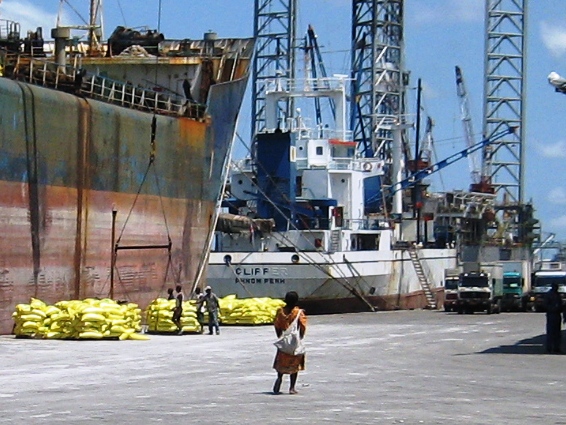Recipient countries in Africa often wait four to five months for food aid to be shipped from outside the region, while commodities bought in the country or region are sometimes available in little more than a month, according to a new report by the US Government Accounting Office (GAO), the Congressional investigative agency that examines the use of public funds and evaluates federal programmes.
The World Food Programme (WFP), the largest food aid agency, found the cost of buying food aid locally was cheaper (34 percent for sub-Saharan Africa, 29 percent for Asian countries) than shipping it from the US, the GAO noted in its report, Local and Regional Procurement Can Enhance Efficiency of US Food Aid, but Challenges May Constrain Its Implementation.
Most of the food used as aid is grown in the US and shipped to recipient countries on American ships; the report looked at the potential of local and regional procurement (LRP) in improving American food aid.
Thomas Melito, Director of the US government's International Affairs and Trade Team, commented in his testimony before Congress on the report based on his team's findings, that LRP "has increasingly become a key element in the multilateral food aid response over the past decade", as most donors have switched to cash-based food assistance programmes in recent years.
The US is the world's largest food aid donor, contributing over half of all global food aid supplies, said the GAO, but it had only recently begun to pilot LRP programmes.
The 2008 Farm Bill, which governs food aid and is updated every five years, authorized the US Department of Agriculture (USDA) to implement a five-year, US$60 million pilot programme to buy food aid nearer to recipient countries. Another $50 million was provided to the US Agency for International Development (USAID) for LRP in response to current emergencies, including the global food crisis in 2008.
WFP has been pushing for LRP in a big way. In 2008 the agency procured 78 percent of its food aid from developing countries and 22 percent from developed countries to counter the global hike in food and fuel prices.
Planning LRP can be complicated by poorly functioning markets: in sub-Saharan Africa there is only one well-functioning agricultural commodities exchange, the South African Futures Exchange (SAFEX), so assessing the actual price of food in other African markets is often difficult, and many are informal.
"For example, approximately 30 to 50 percent of Uganda's marketable surplus for maize is traded informally, often on bicycles across the borders to Kenya or Rwanda, according to WFP, USAID, and foreign government officials, and others we interviewed during fieldwork in Uganda," said the report.
LRP can drive prices up in the country where food is being bought, Melito told Congress. "Although most of the WFP procurement officers we interviewed stated that local procurements of food aid generally do not affect market prices, our review of the literature and interviews during fieldwork show that there have been instances where LRP contributed to price hikes and price volatility in markets from which food is procured."
A lack of good market intelligence was another hurdle. Melito cited Malawi's decision to sell food to WFP in 2007, which his team learnt had been based on inaccurate production estimates. "A few months later, Malawi experienced higher food prices and food shortages."
Despite the "potential benefits" of LRP, a lack of reliable suppliers, limited logistical capacity, weak legal systems, donor funding restrictions and other problems often had to be overcome.
The report pointed out that WFP required food aid suppliers to purchase bonds, which they would lose if they did not fulfil their obligations under the contracts, but when WFP bought from small-scale farmers the requirement was waived, which could create problems.
"For example, WFP's procurement officer in Uganda told us that many of the smallholder farmers WFP purchases from had never seen a contract before, and WFP had to take actions to ensure that these purchases were delivered on time and met the quality specified in the applicable contracts," GAO said.
Timing and donor funding restrictions could also prevent LRP from becoming an efficient source of food aid. A WFP procurement officer in Sudan told the GAO team that in January 2009 he was expecting between 100,000 tons and 200,000 tons of food to be available on the market, but he would only be able to buy 20,000 tons because of the timing of donor funds.
Melito told Congress he found there was a lack of clarity over where aid agencies could forgo the requirement to use US ships to transport food purchased locally and regionally, and it would hinder programmes if they had to wait for US-flag vessels.
He called on all aid agencies to improve market intelligence, ensure that the quality and nutritional standards of food bought locally was maintained, and to clarify the use of US vessels for shipping LRP, to "better meet the needs of hungry people".
jk/he
This article was produced by IRIN News while it was part of the United Nations Office for the Coordination of Humanitarian Affairs. Please send queries on copyright or liability to the UN. For more information: https://shop.un.org/rights-permissions





